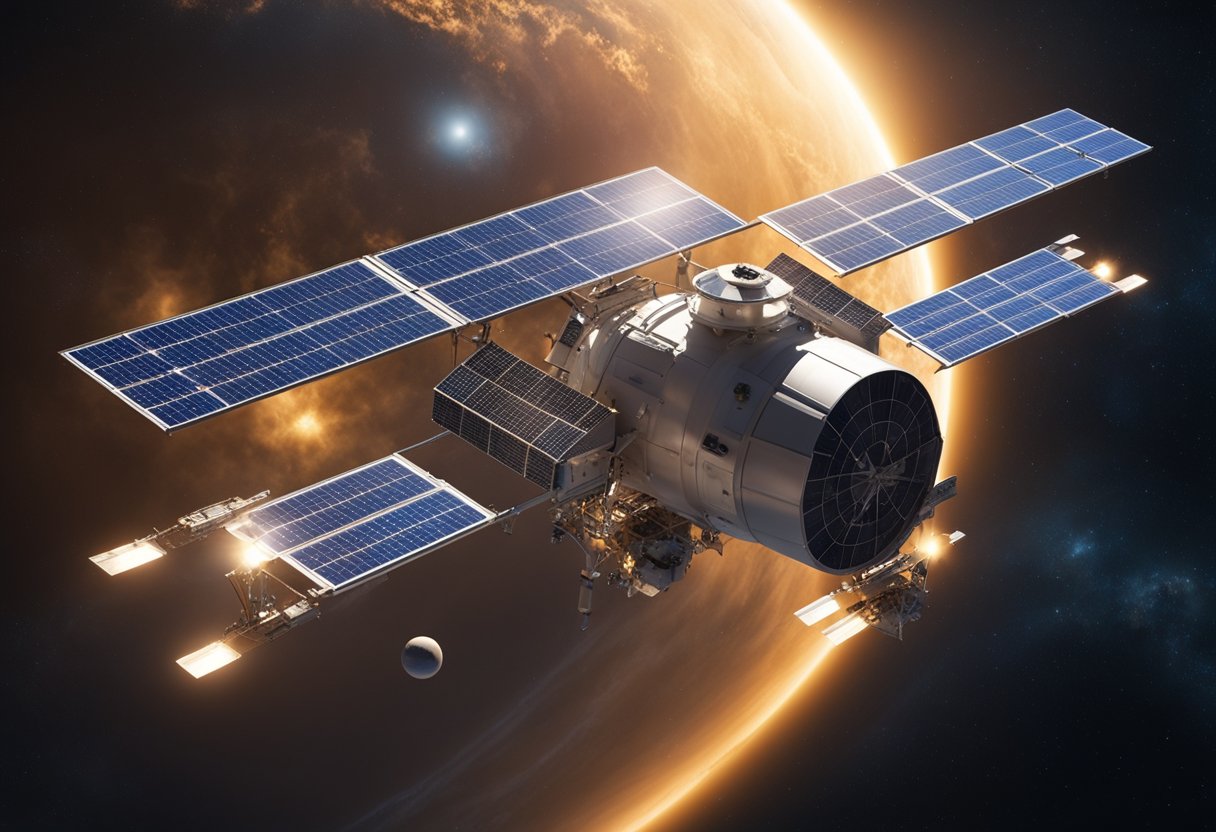
As we turn our gaze to the heavens and embark on the ambitious endeavour of exploring space, the significance of pursuing eco-friendly space travel becomes increasingly clear. The cosmos offers boundless potential for scientific discovery and human achievement, but such ventures come with environmental responsibilities that extend far beyond our planet. Recognising the impact traditional rocket launches have on our atmosphere and climate, there is a burgeoning effort to minimise the carbon footprint of space exploration.
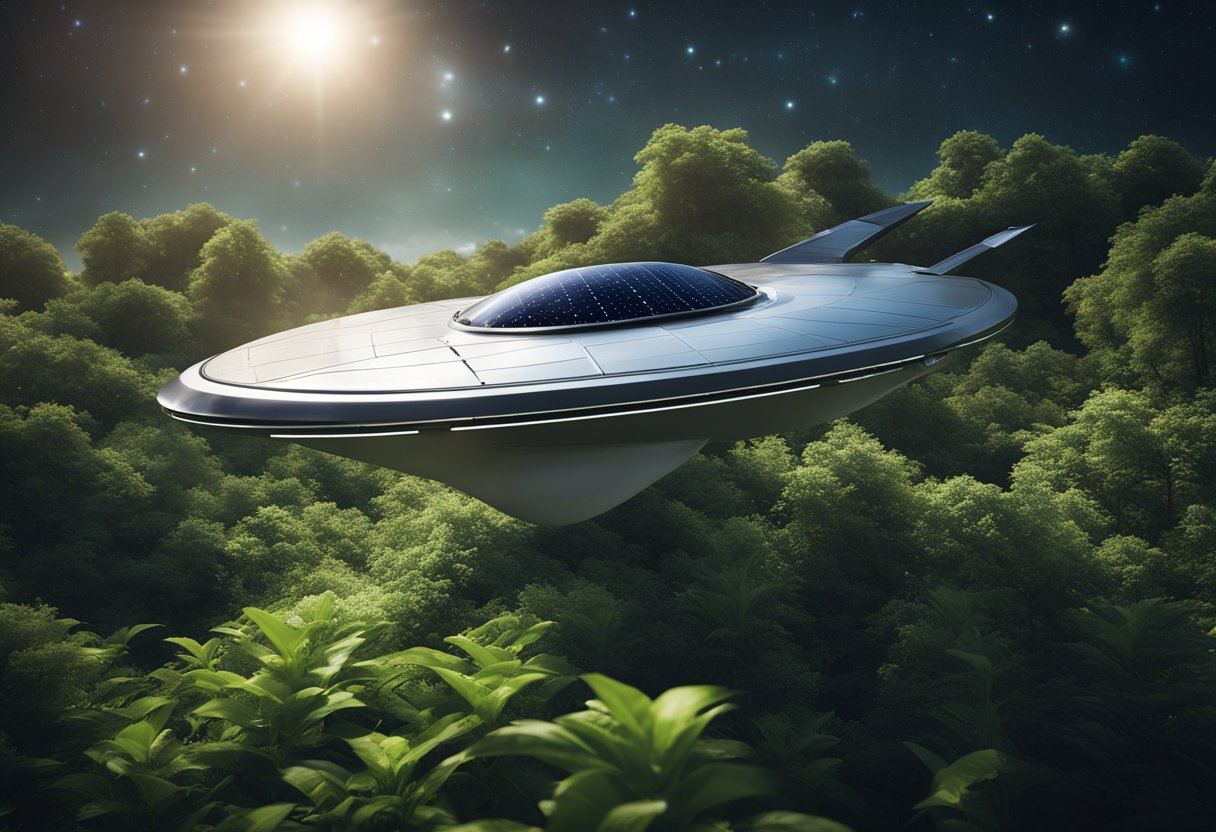
In light of this environmental awareness, innovative companies and space agencies are integrating sustainability into their missions. From harnessing green propellant technology to considering the long-term effects of space debris, these pioneers are shaping a future where space travel respects both the wonder of the cosmos and the well-being of our Earth. Furthermore, the rise of space tourism amplifies the need for eco-friendly practices, as private entities play a larger role in shaping the final frontier. Such advancements demonstrate our dedication to preserving the integrity of not only our home planet but also the celestial realms we aspire to visit.

With the dawn of space tourism, we’re stepping into an era where our celestial aspirations risk clashing with environmental responsibilities. Our initiatives must reflect an eco-friendly ethos to mitigate the widening environmental impact. We recognise that while venturing into space captivates humanity’s imagination, it also carries a significant carbon footprint that contributes to climate change.
To ensure sustainability, we’re invested in developing technologies that reduce CO2 emissions, crafting a foundation for responsible exploration that does not compromise the health of our planet. We envision an era where space travel aligns seamlessly with Earth’s ecological balance.
Our venture, SpaceVoyageVentures.com, underscores our commitment to eco-friendly space travel. By documenting potential future journeys and those on the cusp of availability, we aim to lead by example, prioritising sustainability in our galactic endeavours. We are at the forefront of this pioneering spirit, but we also bear the custodianship of our own environment, seeking to create a synergy between space exploration and environmental stewardship. Our course is set towards a future where the stars are within reach, yet our terrestrial home remains revered and protected.
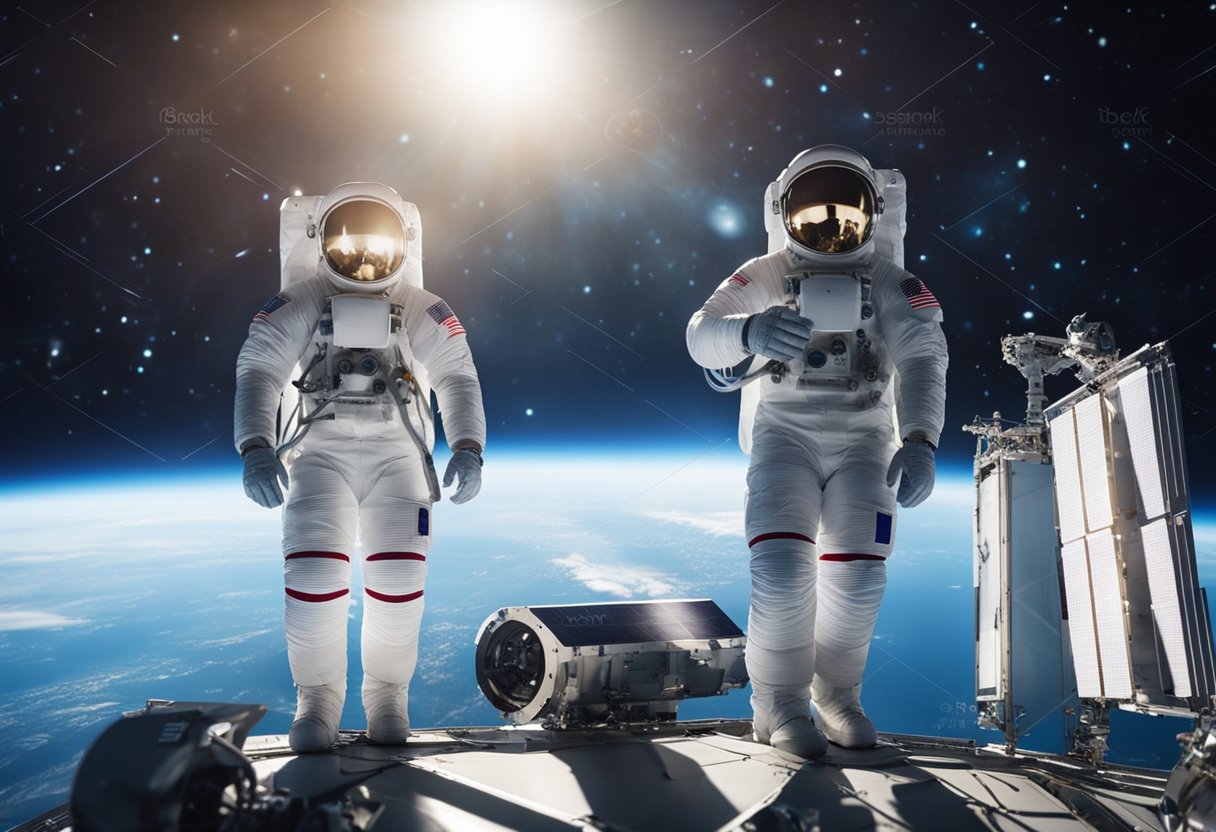
We are witnessing a transformative era in space travel technology, with advancements in rocket propulsion, spacecraft construction, and launch methodologies. These developments contribute to our capability to embark on and sustain space missions.
Rocket propulsion has vastly evolved, with the focus on efficiency and minimising environmental impact. Rocket fuel advancements are pivotal, where liquid hydrogen is widely used as a clean-burning option. Alternatively, methane – a relatively new contender – promises reusability and storage advantages over other fuel types. Companies like SpaceX are incorporating these fuels in their engines, with Raptor engines on the Starship using liquid methane.
Our spacecraft design philosophy prioritises durability and weight reduction. Modern spacecraft utilise advanced materials such as carbon-fibre composites and aluminium-lithium alloys to achieve this balance. Such materials offer strength and resilience against the harsh conditions of space, while also being lighter, enabling the craft to carry more scientific payloads or crew provisions.
Launch facilities and procedures have become more sophisticated. We ensure environmentally conscious launch operations and aim for minimal debris generation. New launch sites are designed for efficiency, enabling a higher cadence of spaceflights. Enhanced protocols and ground systems support a quicker turnaround for launches, aiming to make space travel more akin to conventional air travel in fluency and regularity.
By integrating these technological enhancements, we move towards a future where space travel is more sustainable and within reach, as documented by early pioneers like SpaceVoyageVentures.com.
In evaluating the environmental impact of space travel, we must consider the ecosystem as a whole. Our analysis includes both the atmospheric effects resulting from various emissions and the growing concern over space debris affecting Earth’s orbit.
Emissions: As we advance our capabilities for space exploration, the emissions from rocket launches become a pertinent environmental issue. A primary concern is the emission of carbon dioxide (CO2) and other greenhouse gases like methane (CH4), which can contribute to climate change. To put this into perspective, one SpaceX rocket launch generates approximately 112 tonnes of refined kerosene, which directly feeds into atmospheric CO2 levels.
Atmospheric Impact: The propulsion systems used for launching spacecraft are predominantly reliant on combustion-based fuel, which has multiple environmental implications. Besides greenhouse gases, these launches also release soot and alumina particles into the upper atmosphere, which have the potential to affect the earth’s climate system.
Quantity and Risk: The increase in space missions has led to a surge in space debris, posing significant risks to both operational satellites and the safety of future launches. We’re not only dealing with remnants of old satellites but also with spent rocket stages and fragments resulting from collisions.
Mitigation Efforts: The necessity to keep Earth’s orbit free from excessive debris has spurred various eco-friendly initiatives. For instance, the European Space Agency has been proactively seeking to minimize the impact of its activities by setting standards in debris mitigation and promoting eco-friendly space mission designs. It’s a step towards ensuring the sustainability of space travel and reducing the comprehensive environmental impact of our extraterrestrial endeavours.
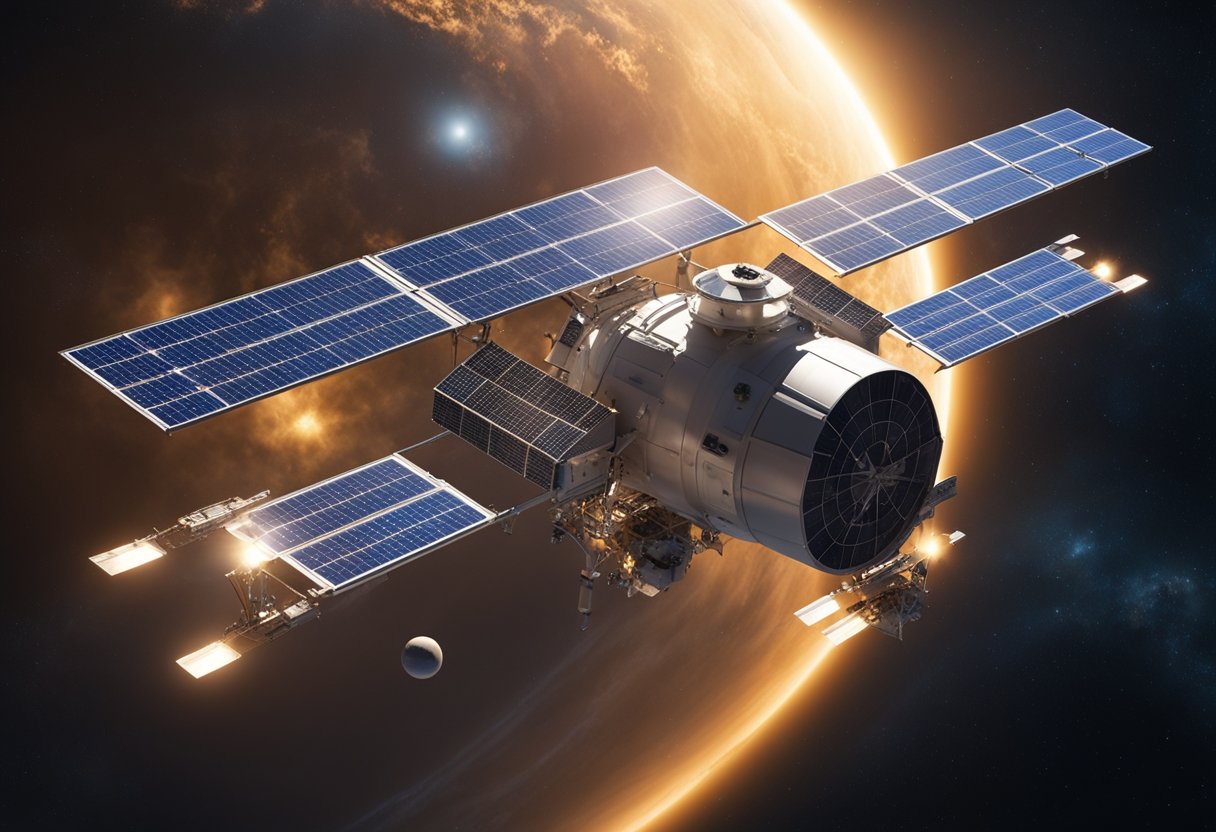
Our focus here assesses the significant strides made by private space companies in making space travel more eco-friendly. We’re witnessing a new era where the boundaries of space are becoming accessible through the innovative efforts of companies like Virgin Galactic, SpaceX, and Blue Origin.
Space tourism is beginning to transition from a distant dream into an impending reality, with private entities such as Virgin Galactic and Blue Origin at the forefront. Virgin Galactic, founded by Sir Richard Branson, is pioneering commercial spaceflights, offering passengers the chance to experience weightlessness and the curvature of the Earth. Blue Origin, under the guidance of Jeff Bezos, is also challenging the frontiers of space travel with its own suborbital trips.
Furthermore, our documentation on SpaceVoyageVentures.com provides insights into the potential of these commercial ventures not just as a luxurious escapade but also as a catalyst for advancing sustainable space exploration.
Innovation in spacecraft propulsion is a key factor in reducing the environmental footprint of space travel. SpaceX, led by visionary Elon Musk, is revolutionising space technology with its reusable rocket systems. These advancements not only lessen the need for manufacturing new components but also significantly reduce waste and overall costs.
| Company | Innovation |
|---|---|
| SpaceX | Reusable rockets, Starship aimed at interplanetary travel |
| Blue Origin | BE-4 engine designed to be reusable |
We’re closely monitoring and excited about advancements such as the development of the SpaceX Starship, which aims to be fully reusable, providing a more sustainable solution for space travel. Our commitment to a more environmentally-conscious approach to space exploration is deeply connected to these advancements in propulsion technology.

In addressing the growing concerns of environmental sustainability, space agencies play a pivotal role in pioneering eco-friendly practices in space exploration. This section delves into the specific contributions of NASA and the European Space Agency (ESA) in this arena.
NASA has long been at the forefront of incorporating sustainability into space exploration. We are seeing efforts from the famous Space Shuttle programme that set precedents in reusability—a cornerstone of sustainable practices. This approach extends to current initiatives such as research into propulsion systems that could dramatically reduce the environmental impact of rocket launches.
The development and support of the International Space Station (ISS) also showcase NASA’s dedication to international collaboration in space sustainability. The ISS serves as a testbed for advanced life support systems that minimise waste and recycle resources, which are crucial for long-duration space missions.
The European Space Agency has embraced an eco-friendly approach to space activities. ESA is actively working on minimising its footprints by implementing Clean Space initiatives, aiming to reduce space debris and promote the concept of sustainable space exploration.
ESA’s advancements include the promotion of space missions that comply with sustainability standards, such as developing technologies to remove space debris. Their focus ensures that future space exploration activities are conducted responsibly, preserving the space environment for subsequent generations.
Through collaborative efforts on projects like SpaceVoyageVentures.com, ESA is also enabling public engagement and awareness, which fosters a responsible attitude towards space tourism and its environmental implications.

In the quest for more sustainable space exploration, significant strides have been made in developing green propellants. These eco-friendly alternatives to traditional propulsion systems present a less harmful impact on both terrestrial and space environments, marking a notable shift towards renewable and cleaner technologies in our industry.
One of the exciting innovations in this domain is Hydroxylammonium Nitrate, a green propellant offering a better performance-to-toxicity ratio compared to its predecessors. Its lower toxicity levels enhance safety for ground operations and demonstrate our commitment to environmental stewardship.
We have also observed a growing interest in using hydrogen fuel for space travel due to its high efficiency and clean by-products—primarily water vapour. Our understanding of hydrogen’s potential and its role in future missions continues to expand, pushing the envelope for what’s possible in space propulsion systems.
The following are some advancements in green propellant technology:
Our commitment at SpaceVoyageVentures.com to document these advancements is unwavering. We are dedicated to providing insight into the latest sustainable technologies that will propel us into a new era of space travel. The work being done in this field is not just a triumph of human innovation, but a critical step in protecting our planet and exploring the cosmos responsibly.
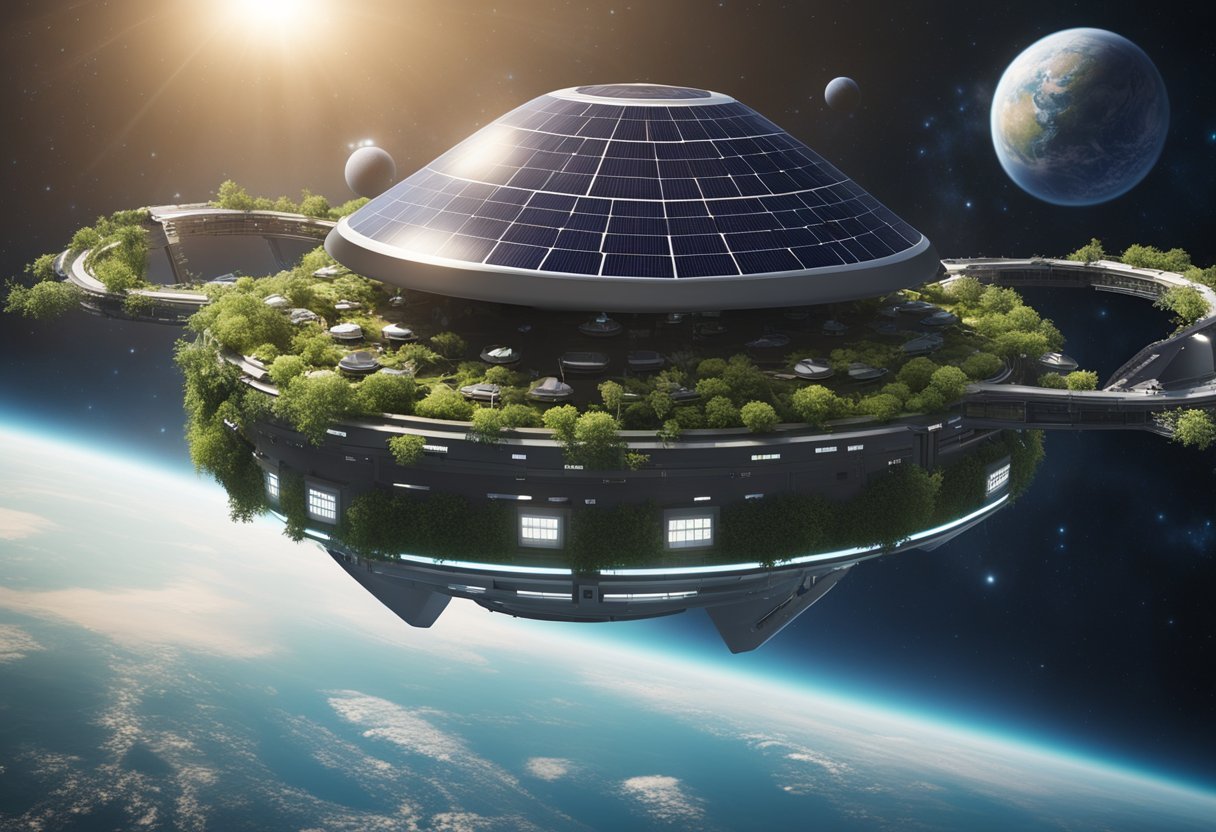
In our quest for the stars, ensuring that space exploration is sustainable is paramount. We must create systems that support life over long durations and develop habitats that are resilient and resource-efficient in the harsh environment of space.
Biosphere 2 serves as a landmark experiment in our understanding of closed ecological systems. This knowledge is crucial as we design life support systems that recycle air, water and nutrients with minimal inputs. Innovations are geared towards creating a closed-loop system that mimics Earth’s natural cycles, which is essential for long-term missions, particularly those to Mars.
Our strategies include the development of efficient waste recycling systems and the integration of plant-based life support systems that can supplement food supplies and regenerate oxygen. Managing resources effectively in these systems is not just beneficial but necessary as it drastically reduces the need for resupply missions from Earth and moves us towards sustainability in space travel.
The design and construction of sustainable space habitats entail creating environments where humans can live and work safely without significant resupply from Earth. We’re leveraging advanced materials and innovative construction techniques to build structures that can withstand the harsh Martian environment, while ensuring the conservation of precious resources.
In the consideration of habitats, sustainability translates to energy efficiency, robustness, and the ability to use local materials – a concept termed ‘in-situ resource utilisation’ (ISRU). This approach significantly lessens the payload that needs to be transported from Earth, as Martian resources are utilised for constructing habitats and supporting life. Our aim is to create habitats that are not just survivable but also comfortable, supporting the mental and physical well-being of their inhabitants.
Through the prudent planning of life support systems and the innovative design of space habitats, we are making headway in the sustainable expansion of human presence beyond Earth. The work we’re involved in today lays the groundwork for the eco-friendly exploration of new worlds. For insights into the exciting possibilities of space travel, including tourism, we invite you to visit SpaceVoyageVentures.com.
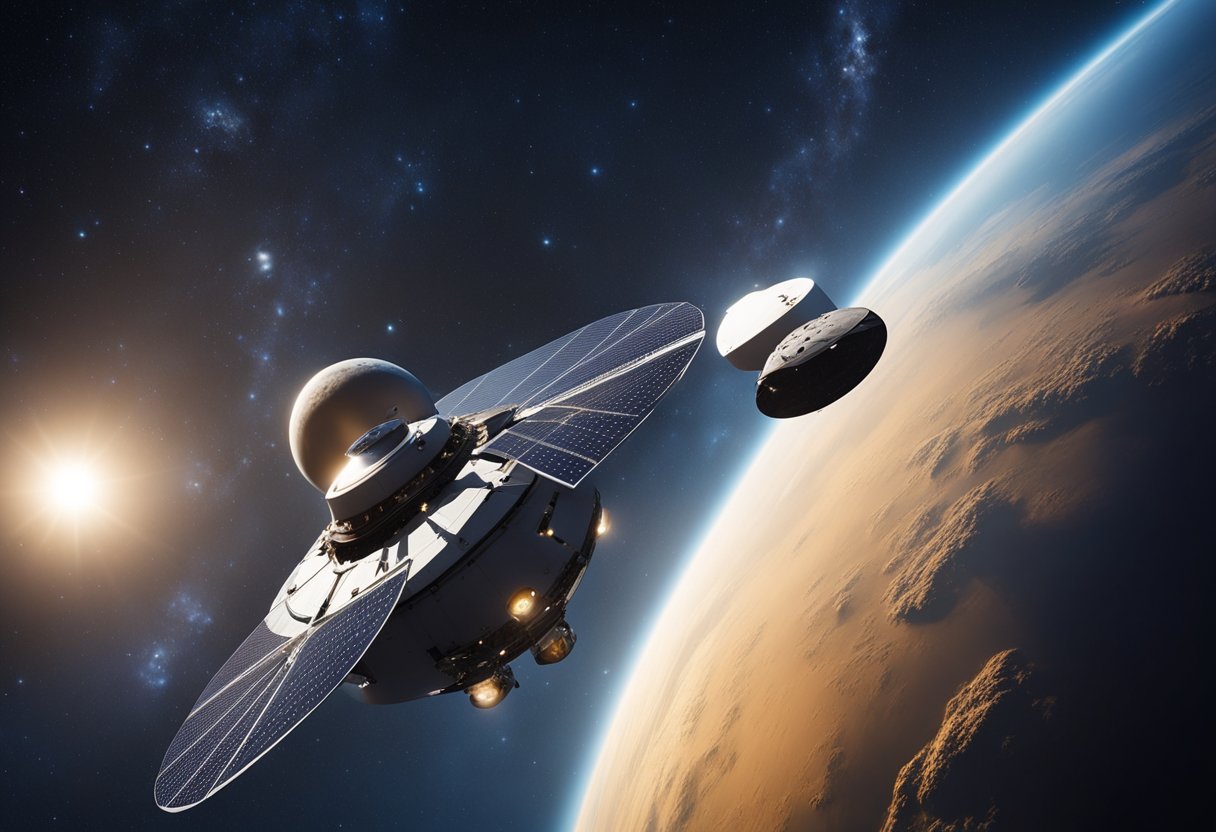
As the vision for space tourism takes shape, we’re witnessing innovations aimed at making this futuristic endeavour more environmentally sustainable.
Suborbital flight experiences offer a brief journey to the edge of space without completing an orbit around Earth. Companies are striving to reduce these flights’ carbon footprint through the use of advanced, less polluting propulsion systems. Each step towards more eco-friendly rockets is critical for sustainable space tourism. For instance, Space Perspective is exploring ways to lessen the environmental impact, thus making the promise of space tourism accessible yet responsible.
Alternatively, high-altitude balloon excursions provide an equally thrilling view of our planet from the stratosphere, with a significantly lower ecological impact. Companies like Space Perspective, co-founded by Jane Poynter, leverage the simplicity and serenity of balloons which, remarkably, have a much smaller ecological footprint. Notable personalities like William Shatner have endorsed the sheer wonder of space travel, shedding light on its potential to inspire eco-conscious practices within this burgeoning industry.
For those eager to learn more about the evolving realm of space excursions and the strides being made towards eco-friendliness, SpaceVoyageVentures.com serves as a valuable resource documenting the trajectory of space tourism.
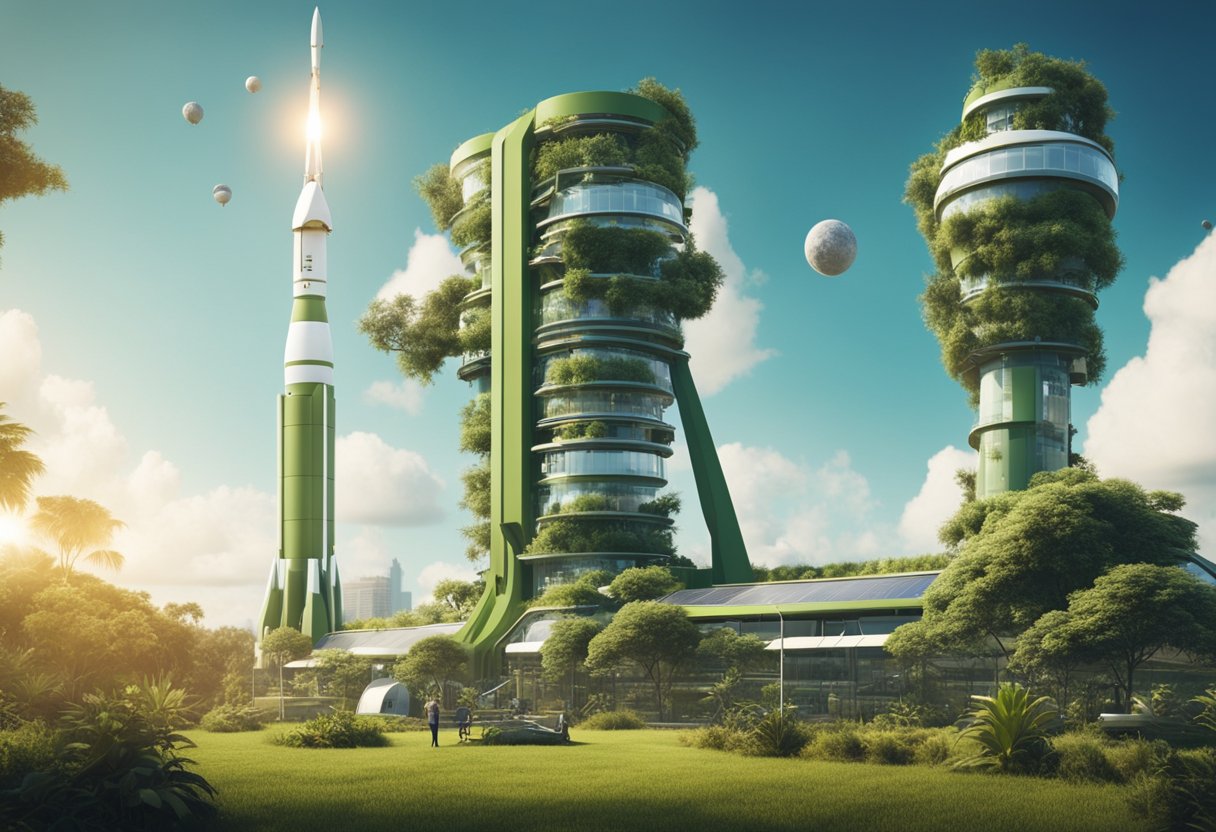
As we explore the viability of eco-friendly space travel, we are confronted with notable challenges. Two of the most pressing are policy and regulation dilemmas, and technical and economic barriers, which we will examine in detail.
Policy formation is intricate, especially in the emergent field of space tourism. Current policy frameworks may not be sufficiently forward-looking or adapted enough to encompass eco-conscious space travel parameters. This can lead to a regulatory gap, where eco-innovations are hampered by outdated policies. A key example is the struggle to regulate the usage of fossil fuels in commercial flights and space travel, where international consensus is still an uphill battle.
Regulations that efficiently govern space debris management are in developmental stages. For instance, the European Space Agency is taking a pioneering stance on eco-friendly space directives.
On the technical front, developing propulsion systems that do not rely on fossil fuels is a massive challenge. The shift demands significant research and development to create viable alternative fuel sources. This innovation needs to align with economic sustainability to ensure that safe and eco-friendly commercial spaceflights become a regular occurrence.
We must also recognise the substantial economic investments required for such a transition. The upfront costs of developing technologies for sustainable space operations can be daunting. Furthermore, economic incentives must align with environmental goals to encourage the industry. Entities like SpaceVoyageVentures.com delineate the potential paths for future eco-conscious space tours, yet the commercial viability remains in question without solid economic strategies in place.
We are at a pivotal juncture in space exploration where sustainability is as crucial as the missions themselves. In this section, we’ll explore how current research and innovation efforts are shaping a more eco-friendly approach to space travel.
In the quest for eco-friendlier space exploration, significant focus has been placed on research and development (R&D) of rockets with reduced emissions. Scientists and engineers are actively exploring new technologies to cut down on the environmental impact. For instance, NASA is dedicated to introducing advancements in propulsion technologies that could minimise the carbon footprint of rockets. Their initiatives aim to deliver a new generation of lower-emission propulsion systems.
Seeking out alternative resources for rocket propellants is a central strategy in mitigating the environmental costs of space travel. Research into propellant options includes biofuels and less harmful chemical combinations. The use of methane as a rocket propellant is gaining attention due to its cleaner combustion and the potential for on-site production on Mars, turning the Martian atmosphere into fuel for the return journey to Earth.
We’ll continue to monitor and engage with the latest developments in eco-friendly space travel. Our commitment remains on researching and innovating for a sustainable future in space exploration.
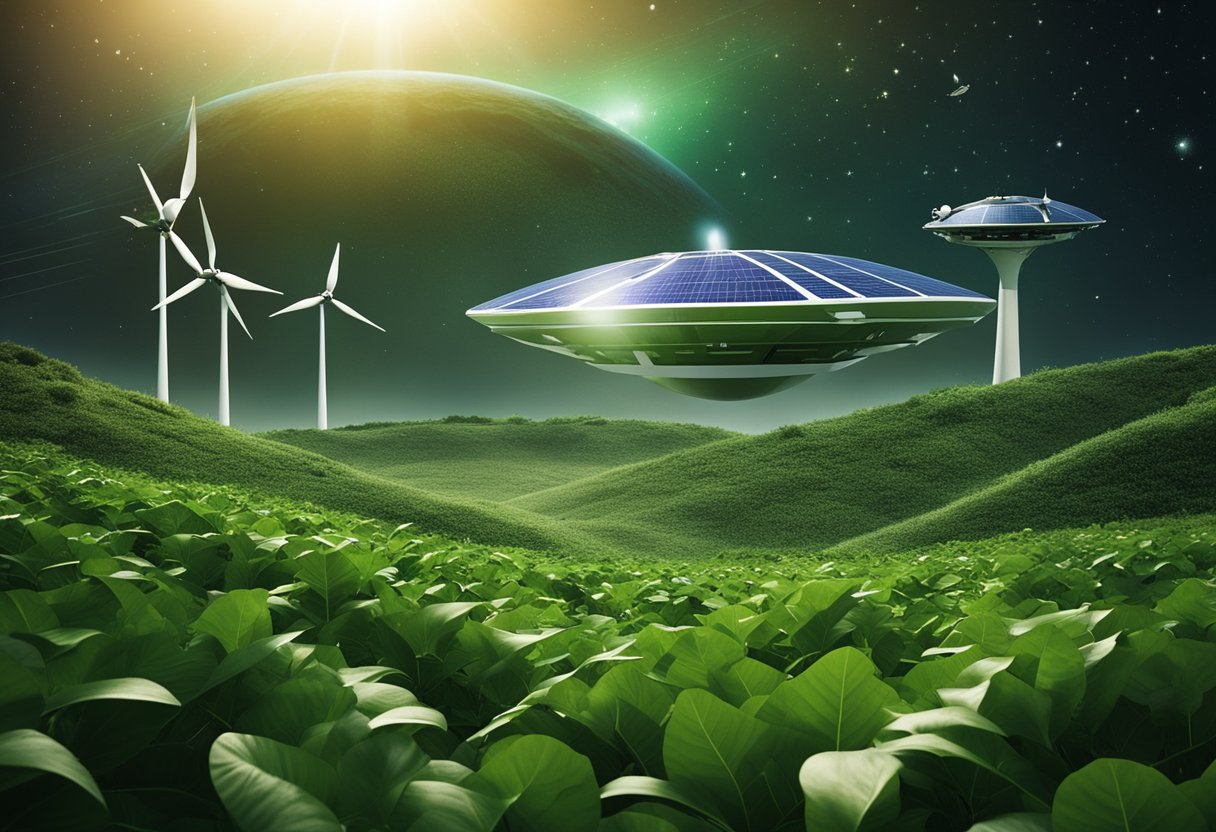
As we consider the evolution of space travel, we are increasingly focused on making this frontier accessible while ensuring it remains sustainable. In the drive towards a smaller ecological footprint, innovative methods are at the forefront of our pursuits.
Current projections suggest that the sky is no longer the limit with renewable energy sources potentially powering future launches. Companies are investigating how solar energy, among others, could replace traditional fuels for rockets. This could lead to a significant reduction in emissions, protecting the stratosphere and beyond from harmful pollutants.
Our aim is to leave the stars untarnished by terrestrial pollution. This involves developing spacecraft that minimise or completely avoid the release of pollutants in both the stratosphere and outer space. Several strategies are under evaluation:
Through websites like SpaceVoyageVentures.com, we track not only potential future trips to the cosmos but also eco-friendly technologies that are poised to revolutionise the industry. Our commitment is to a future where space travel thrives alongside renewable practices, ensuring exploration continues with minimal environmental impact.

Within our quest for sustainable spaceflight, we grapple with the pivotal challenges of minimising environmental harm while exploring the cosmos. Here, we address common inquiries regarding the intersection of ecological responsibility and space travel.
Space exploration can be made more eco-friendly by utilising lightweight materials for spacecraft, ensuring that satellites are equipped with means to de-orbit them at the end of their life-cycle, and developing propulsion systems with reduced emissions. The European Space Agency is striving towards a zero debris approach to eliminate space debris creation.
Several companies are recognising the importance of sustainable practices in space travel. Space Perspective is working to craft an eco-friendly space tourism experience. Similarly, efforts by SpaceX and Blue Origin to develop reusable rocket technology demonstrate a shift toward more sustainable space ventures.
Current space missions impact Earth’s atmosphere primarily through rocket launches that release carbon dioxide and other pollutants. Additionally, discarded rocket stages and defunct satellites add to space debris, posing collision risks and contributing to a broader orbital waste problem discussed by Vox.
Research into alternative propellants, such as hydrogen and biofuels, is ongoing. These fuels have the potential to lower rocket emissions significantly. While changes will not happen overnight, the introduction of more environmentally benign propellants holds promise for cleaner spaceflight.
We can design satellites that are more eco-friendly by incorporating solar power, using materials that minimise radiation risk and ensuring better end-of-life strategies. This might include controlled re-entry to Earth’s atmosphere where satellites burn up completely or capture mechanisms for space debris removal.
Long-term sustainability in space travel hinges on the enforcement of international regulations governing space traffic, the design of spacecraft for multiple reuses, and the development of efficient debris removal systems. Emphasising the environmental impact in the design phase is essential as the space travel industry evolves.